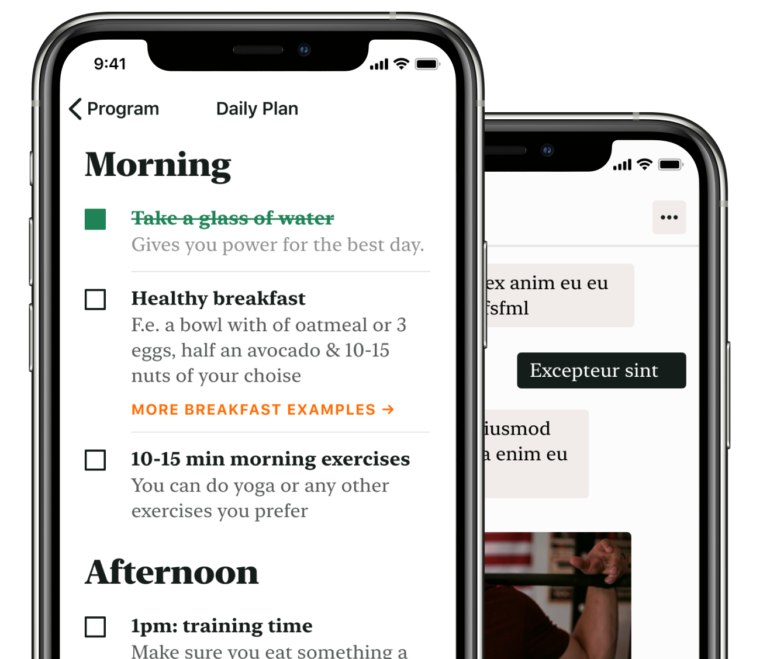Despite Dopamine Fasting 2.0’s soaring popularity in media outlets all across the globe, misunderstanding about it still abounds. Fortunately, we’ve done all the hard research for you. Look no further to learn the most essential things you need to know.
Let’s get started…
What Is Dopamine Fasting?
There’s been much confusion about what dopamine fasting entails. Some people mistakenly believe you have to reduce dopamine levels, avoid talking or socializing, avoid all stimulants, avoid technology, or even take a vacation.
Real dopamine fasting encourages health-promoting behaviors. But you also have to break your overdependence on technology. So, you can’t binge-listen to Spotify; get lost on YouTube; spend hours scrolling through social media feeds; play internet games from dusk till dawn; eat an entire cake in one sitting; or generally indulge in any other harmful dopamine-related habit.
The Science of Dopamine Fasting 2.0
Dopamine functions as a neurotransmitter — a chemical released by nerve cells to send signals to other nerve cells. Because dopamine is essential to so many bodily functions, you can’t “fast” from it. What you can do, though, is fast from impulsive behaviors that dopamine enforces.
What does impulsive behavior look like? Well, you might remember the concept of conditioned responses from psychology class years (or decades) ago. For example, you see a notification on your phone (the stimulus), and thenyou grab the phone to read the notification (the reward). Whether or not we admit it, the process is impulsive; it happens without thought. The goal is to break the automatic behavior.
Dopamine Fasting 2.0 and Cognitive-Behavioral Therapy (CBT)
Dopamine fasting adopts a technique based on the principles of cognitive-behavioral therapy (CBT). The technique is called stimulus control, and its goal is to form new neuropathways.
It requires lots of willpower to regain flexibility over impulsive, rigid habits. But it’s possible by restricting external stimuli. The process of stimulus control involves the following:
- Put away the stimulus (like your phone or gaming console), or make them harder than usual to access.
- When you feel the need to check your social media feed or engage in an online multi-player event, engage in an alternative activity that’s incompatible with the stimulus. For example, you can read a book, listen to a podcast, jog, or even eat.
- Be accountable to a person or software to avoid cheating.
It’s natural for your urges to keep returning. However, CBT has an answer for that, too. In the exposure and response prevention technique, you deliberately expose yourself to your trouble stimuli, and then just be a non-judgmental observer of the thoughts and feelings that arise. You remain detached, and eventually the urge will subside.
Frequent practice of exposure and response prevention weakens classical conditioning, which ultimately restores behavioral flexibility. When both CBT techniques are employed, CBT becomes the benchmark remedy for impulse control disorders.
In a recent study involving more than 1765 students, it was discovered that dopamine-fasting from Facebook for a week helped them regain, on average, 13.3 hours of time. It also significantly reduced depressive symptoms, by 17%. This allowed them to engage in healthier behaviors instead.
The Dopamine Fasting 2.0 Schedule
Dopamine Fasting 2.0 is different from other fasting programs in that it uses time blocks. The program doesn’t enforce total deprivation, but it encourages fasting for gradually longer periods intermittently for greater benefits.
This program is designed to help practitioners regain behavioral flexibility in certain areas. So, you can still indulge in the activity after following the fasting schedule for the day.
The fasting period excludes the time that would normally make it easy for you to comply with the rules.
For example, if you’re fasting from online mobile gaming, you wouldn’t count hours where you are at work, especially if you work in an office with strict rules regarding the use of mobile phones.
So, when should you fast? Here are some options:
- 1–4 hours (or more) at the end of your day
- On Saturday or Sunday
- 1 entire weekend per quarter (go on a local trip)
- 1 entire week per year (consider it a holiday)
There’s no fixed amount of required fasting time. You can set your own fasting time based on your current tolerance level. But be determined to slowly increase your scheduled fasting time until you’ve reached your desired result.
The Dopamine Feasting 2.0 Schedule
While there are no stringent rules for when you need to dopamine-fast, there are none for when you can dopamine-“feast” either. So when you’re not fasting, you can indulge in the behavior for 5–30 minutes as often as three times a day.
If you’re trying to limit your phone usage but are on feast mode, one effective technique, for example, would be to check your phone for notifications immediately after meals and only for a limited amount of time.
The Importance of Dopamine Fasting 2.0
More than ever, researchers have raised concerns about how overly dependent younger generations have become on technology and the internet. With hundreds of social media platforms and online multi-player games, there’s little wonder why so much time is spent on the world wide web.
People derive pleasure from doing different things. And the likelihood of addiction to a particular behavior varies from one person to the next.
In no particular order, the most common impulsive behaviors that are prone to addiction are:
- Emotional eating
- Internet use and gaming
- Gambling and shopping
- Porn and masturbation
- Thrill- and novelty-seeking
- Recreational drugs
Fortunately, dopamine fasting can be applied to any of these addictions, and more. If you have an impulsive behavior that needs to be checked, consider making a Dopamine Fasting 2.0 schedule.
In a Nutshell
Dopamine fasting differs from intermittent fasting because the program gives you a bit more flexibility. You can still enjoy addictive activities, but you build in checks to prevent disastrous bouts of overindulging. In the long run, you’ll have gained more control without feeling deprived.
And when you’re fasting, you don’t have to be miserable! You can still engage in other fun and exciting activities, and these activities can improve your health at the same time. For example, you could cook a healthy meal, exercise, learn a new skill, read, paint, or hang out with friends!
So go on, try it out and make Dopamine Fasting 2.0 work for you. You’ve got nothing to lose.
Disclaimer: This information isn’t a substitute for professional medical advice, diagnosis, or treatment. You should never rely upon this article for specific medical advice. If you have any questions or concerns, please talk to your doctor.

